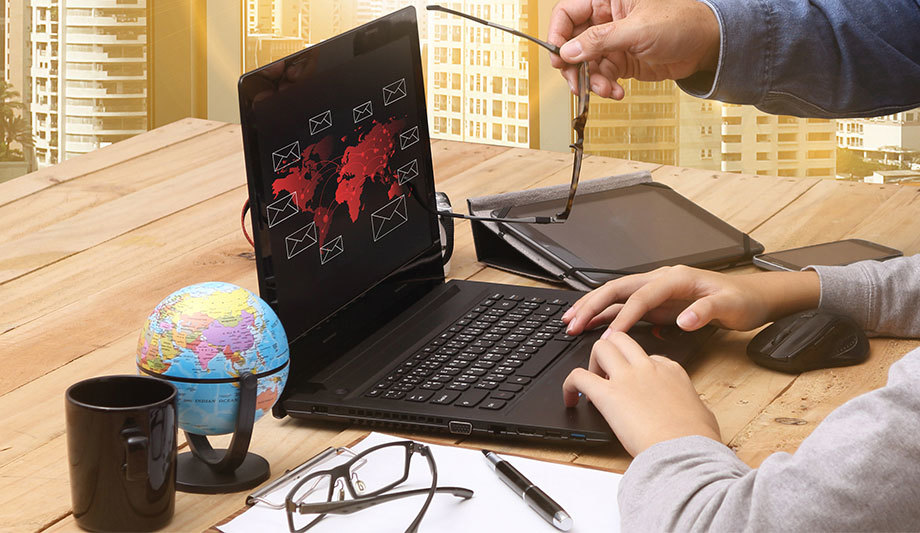As Internet of Things (IoT) devices go, networked video cameras are particularly significant. Connected to the internet and using on-board processing, cameras are subject to infection by malware and can be targeted by Distributed Denial of Service (DDoS) attacks. Hacking of cameras also threatens privacy by allowing unauthorised access to video footage. The performance of hacked cameras can be degraded, and they may become unable to communicate properly when needed.
Ensuring cybersecurity is a challenge, and the fragmented structure of the video surveillance market contributes to that challenge. A variety of companies are involved in manufacturing, integrating, installing and operating video systems, and cybersecurity threats can enter the picture at any stage.
“It’s not always clear who is responsible,” says Yotam Gutman, vice president of marketing for SecuriThings, a cybersecurity company. “However, the only entities who can ensure cybersecurity are the security integrator and the service provider. They will bear the financial pain and are willing to pay for cybersecurity. An extra $1 or $2 per camera per month is not expensive.”
SecuriThings’ “lightweight software agent” runs in the background of video cameras, sending information to an analytics system in the cloud
IoT device security management
At the recent IFSEC trade show in London, SecuriThings unveiled its IoT Device Security Management (IDSM) approach to enable integrators to ensure cybersecurity. Founded in 2015, the company has around 20 employees in Tel Aviv, Israel, and operates a sales office in New York City.
SecuriThings’ “lightweight software agent” runs in the background of video cameras, collecting metadata on camera processes and connections and sending information back to an analytics system in the cloud. Drag-and-drop deployment enables a camera to begin generating data within seconds and requiring only two mouse clicks.
The cloud system analyses data, pinpoints abnormalities, identifies new users, detects multiple entry attempts and tracks other camera processes to identify any cyberattacks. It monitors all devices, gateways, users and APIs to detect threats in real-time and mitigate the threats based on a pre-determined security policy. Machine learning tools also analyse more subtle activities that can indicate insider abuse. For example, a user support center can identify if cameras are being accessed improperly by employees, thus preventing insider abuse.
Certified vendor agnostic software
SecuriThings is working with camera manufacturers and video management system (VMS) manufacturers to certify operation of its software agents with various camera models and systems.
Working through integrators, such as Johnson Controls, is the fastest route to market, SecuriThings has determined. The system can be added after the fact to existing installations for immediate monitoring and remediation, or it can easily be incorporated into new systems as they are launched. “We have a strong sales team in the United States focusing on bringing the technology to more local and national integrators,” says Gutman. Certification ensures SecuriThings’ software agent can be installed in most modern camera models without negatively impacting operation; the software is vendor agnostic.
Another eventual route to market is to work with camera manufacturers to install the SecuriThings software agent in cameras at the factory. In this scenario, the system can easily be “clicked on” when cameras are installed.
| The SecuriThings cloud system generates a dashboard that tracks system activities to identify any cybersecurity threats |
IoT Security Operations Center
SecuriThings operation is transparent to the VMS, and the company works with VMS manufacturers to ensure the code operates seamlessly with their systems. Cloud analytics generate a dashboard that tracks system activities, and/or a managed service monitors the system and notifies customers if there is a problem.
“We monitor it from our IoT Security Operations Center, a fully managed service that ensures the real-time detection and mitigation of IoT cyber-threats,” says Gutman. “We found that end-customers don’t have the manpower to monitor the system, so our experts can guide them.”Access control and cloud-based access control will be the next systems under cyberattack, and they are almost as vulnerable"
A benefit for camera manufacturers is the ability of a system like SecuriThings to “level the playing field” on issues of cybersecurity, says Gutman. The approach provides a higher level of cybersecurity confidence for integrators and users, including those using cameras that have previously had cybersecurity problems such as “back door” access. SecuriThings has certified its software for use with Hikvision cameras and is in the process of certifying with Dahua, says Gutman.
“Western manufacturers say their products are more secure, but we can help all camera manufacturers prove that they are just as secure,” says Gutman. “Integrators and users can log into a device and see all the activity.”
Securing connected devices from cyber threats
Beyond video, SecuriThings’ products target the full range of connected devices in the Internet of Things (IoT). The SecuriThings security solution enables real-time visibility and control of IoT devices deployed in massive numbers in smart cities, physical security, building automation, home entertainment and more. Video surveillance is an early focus because of market need, an opportunity to gain traction, and the critical nature of security applications. But the challenges are much broader than video surveillance.
“We are seeing similar risks to other devices,” says Gutman. “Access control and cloud-based access control will be the next systems under cyberattack, and they are almost as vulnerable. If you can disable the access control system, you can cause a lot of problems.” Other connected devices that could be at risk include building automation and heating and cooling (HVAC) systems.

